Tea House of the Spirits is a blog about my Pagan Religious stuff. Expect druidry and other things such as excursions into Buddhism, Shinto, Hermeticism, and magical discussion.
Friday, April 29, 2011
News Round-up
The Parliament of Kyrgyzstan have sacrificed seven rams in an attempt to appease evil spirits plaguing the chamber.
India held a massive state funeral for the late Guru Satya Sai Baba.
Issues involving the disposal of sacrifices are causing tension between Park Rangers and Hindu Worshipers in New York.
The Last Supper has been Super-sized.
The King James Version of the Bible is now 400 years old.
Linkara reviews the Godyssey.
The Archbishop of Canterbury speaks on the Royal Wedding and about the sense of hopefulness and generosity which lie at the heart of marriage.
Thursday, April 21, 2011
Can Can Bunny Extra: Hentai Tantra
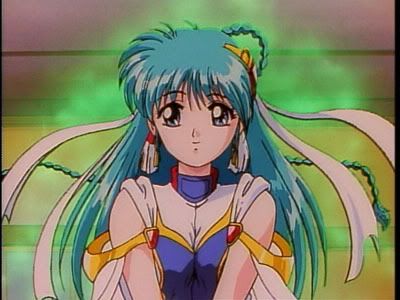
Hi, I'm Saraswati!
Can Can Bunny Extra is one of the several religious themed hentais I walked into during ACEN. It's one of those hentais that are on one level cute and on another level weird as shit. The series at first glance seems kind of like a softcore hentai version of Ah! My Goddess but features for whatever reason Buddhist Goddesses and the Seven Lucky Gods. As the series pans out however it ends up being rather more than a simple hentai.
The series starts off with perpetual looser Kenta playing dating sims and becoming frustrated as he discovers the game he was playing doesn't have a sex scene at the end as he bemoans his perpetual inability to get laid. In the midst of his frustration he utters a prayer to Benzaiten expressing his desire to get laid. When suddenly in a flash, what to Kenta's wondering eyes should appear but Benzaiten and six chibi deities...

Left to Right: Daikokuten, Hotei, Marishiten(?), Benzaiten, Fukurokuju, Bishamonten, and Ebisu.
Benzaiten identifies herself as Saraswati and explains that the seven lucky gods are tired of always commuting between heaven and earth and want to get a quiet place on earth. So in exchange for allowing the seven lucky gods to become his roommates Benzaiten offers to grant him his wish as a boon. Using the power of the seven stars of Big Dipper, Benzaiten arranges things so that Kenta will have an opportunity to have sex with seven women (after helping them out). This forms the bulk of the story for the first arc of three episodes where Kenta ends up helping the various women do various things (such as become a published Manga artist, help a elderly uncle make peace with the past) or save them from difficult situations (Bullying, near rape by a street gang, attacked by a vengeful ghost) with an extreme amount of self-sacrifice and compassion for the women. To add to the complexity Benzaiten falls in love with Kenta due to his good heart and compassion (while being annoyed at his lust) but does not admit it to Kenta. Benzaiten also faces the punishment of Emperor Shibi, yes - The Emperor Shibi from Hindu & Buddhist tales who offered his own flesh to a hawk to save the life of a small bird, for using the stars of the Big Dipper without permission.
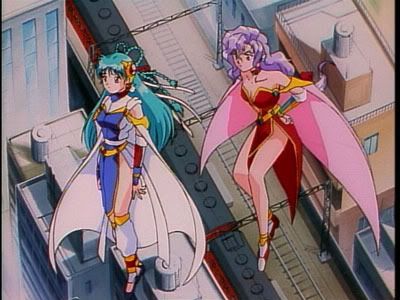
Benzaiten & Kisshoten
Also showing up to this divine mess is Benzaiten's 'cousin' Kisshoten aka Lakshmi who helps Benzaiten out and acts a foil to her. As an interesting side note Lakshmi does this to Saraswati in Hindu Mythology as well:
Sarasvatī is also said to have had her origin from the god Viṣṇu. In several places she is said to be his tongue or to be held in his mouth. Her association with Viṣṇu makes her the co-wife of Lakṣmī in many myths. In this relationship Sarasvatī for the most part represents spiritual, ascetic, or religious goals and values, whereas Lakṣmī represents worldly well-being as manifest in wealth, material power, and fertility. In some texts the two goddesses do not get along very well, suggesting, perhaps, a tension between bhukti (sensual enjoyment) or dharma and mukti (spiritual liberation or perfection) in Hinduism.
Kinsley, David R. Hindu Goddesses: Visions of the Divine Feminine in the Hindu Religious Tradition. Berkeley, California: University of California Press., 1986. p.58
Kisshoten also falls in love with Kenta. In the final episode she offers to return the power of the Big Dipper and to take the punishment of becoming a wife of Emperor Shibi so that, unbeknownst to Benzaiten, she can take a physical form and have sex with Kenta. Benzaiten finds out about this after the fact and gets mad at Kisshoten which ends the first arc as the Ebisu and the other lucky gods laugh at the situation.
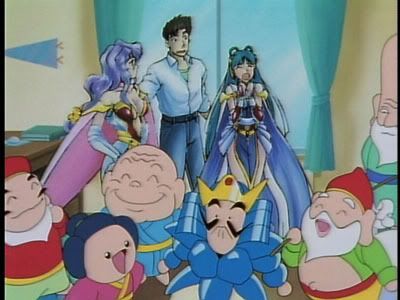
VI - The Lovers
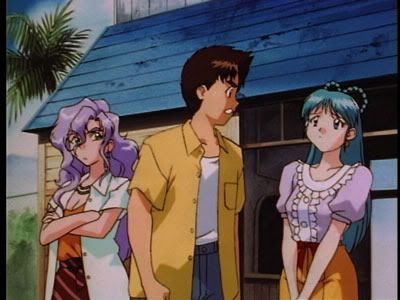
Summer Fun!
As the second and final arc begins Emperor Shibi discovers what Kisshoten and Benzaiten have been doing and as punishment temporarily has them turned into humans. Kenta takes a summer job at 2nd rate beachfront resort hotel and apart from a subplot about two rival sufer hotel owners the story focuses on Kenta slowly discovering the value of real love and moving away from Kisshoten (who reluctantly urges him onward to Benzaiten). Kenta during this time has randomly has sex with a couple of other girls during the course of the arc who he helps out but the sex scenes do not receive as much attention as they did in the first arc.
Kenta and the now powerless Kisshoten and Benzaiten are helped out a lot by the other gods, primarily Ebisu and Daikokuten, leading to various gags such as Daikokuten controlling the unconscious body of Kenta with a video game controller to beat up a gang terrorizing a women (the gang had beat up Kenta when he had intervened).

Now you're playing with divine power!
The dynamic between Kisshoten and Benzaiten seems to echo their mythology and to an extent also a version of the Lovers card from the Tarot of Marseilles where the protagonist much chose between virtue and worldly pleasure. Here Kenta is divided between real love and sheer sensual lust.
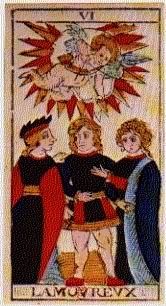
Tarot of Marseilles - The Lovers
Kisshoten represents sensual pleasures while the more conservative Benzaiten (who continues to criticize Kenta's lust throughout) represents real love. As the arc pans out Kenta starts to see the value in love and slowly turns towards Benzaiten. As the series draws to a close Kisshoten helps push Benzaiten and Kenta together and leaves in the middle of the night (well, after one final night with Kenta) and the show ends with Benzaiten and Kenta embracing on the beach with a kiss - no sex scene with Benzaiten.
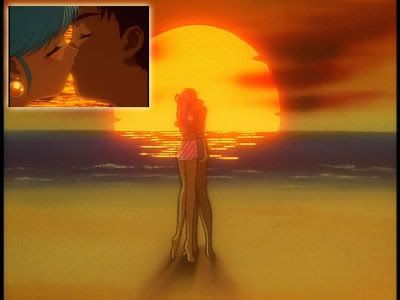
Just a kiss - What? Did you think this is a Hen... er... wait...
The ending no doubt probably pissed off a number of people, who would also be pissed off by the presence of a plot and a moral that ended up sidelining the sex. But I actually kind of liked the ending as it did empathize the plot and played off the very beginning of the series where Kenta plays a dating game and gets pissed off that there was no sex scene at the end. Kenta has finally gone beyond the simple fleeting sensual pleasures of random meaningless sex to find the intangible joy of actual love and devotion in a relationship with Benzaiten. Taking this farther, since Benzaiten is a goddess, the story can also be seen as turning one's back on transient worldly pleasures for union with the divine.
So there you have it a cunning religious morality tale about love and lust featuring a self-sacrificing compassionate protagonist in the guise of a normal hentai. I actually kind of like it's novel approach and refreshing story.
"May Goddess Saraswati,
who is fair like the jasmine-colored moon,
and whose pure white garland is like frosty dew drops;
who is adorned in radiant white attire,
on whose beautiful arm rests the veena,
and whose throne is a white lotus;
who is surrounded and respected by the Gods, protect me.
May you fully remove my lethargy, sluggishness, and ignorance."
~Saraswati Vandana Mantra
7.5/10
Friday, April 15, 2011
Quickie Review: Eat. Pray. Love. The Movie!
In lew of something new and original due to things popping up: here's a quickie review of Eat. Pray. Love. The Movie!
It was with a bit of trepidation that I went to see Eat, Pray, Love. this morning. I was prepared for a horrible movie but was intrigued by reports of the Indian government trying to make sure the Ashram had some accuracy, the ire of villagers whose Temple was taken over during a major festival, and Julia Robert's Conversion to Hinduism. In the end Eat Pray Love turned out to be a rather average film which had some good moments it its Rome phase but ended in blandness.
*WARNING: Spoilers Below*
The first part of the film set in New York was just awful. To given an example of how bad it was there is a scene featuring a badly written play (by the Protagonist) performed bad actor on stage - the problem was I didn't realize it wasn't part of the film until the camera panned out reviewing it to be a show on stage and some people declaring it to be awful and leaving. If it's hard to tell the normal acting from purposely bad acting - you've got some major problem. The acting thankfully picks up in the Rome, Indian, and Balinese scenes.
The worst bit of acting is turned in by Roberts when her character breaks down because married life is boring and unfulfilling. Roberts just suddenly starts crying, wailing, and grimacing in pain like someone shot and killed her mother in front of her eyes because her life as a globe trotting travel writer with a wealthy but bland and directionless man is boring.
Long story short she gets a divorced, gives away all her money to get the divorce, and goes on a globe trotting adventure where she spends a lot of money. Confused? Well while it's not explained in the film the real life Elizabeth Gilbert was given a huge advance and other perks to go globetrotting and to turn her midlife crisis into a novel.
Ignoring the issues with this, the film actually has a fairly good story as it turns a Midlife Crisis into a Hero's Journey with a Yoda-like (seriously he was compared to that) Balinese Shaman acting as Elizabeth's mentor. Heck it's like they ticked off every step.
The best bits of the film were set in Rome where Elizabeth learns to not be constrained by cultural views and conventions and then a very spectacular scene where she realizes impermanence and constant change by contemplating the ruined and much abused Mausoleum of Augustus. That scene and the realization is the highlight of film and unfortunately the rest of the film cannot keep up after that and feels sort of like an after-note.
The Indian scenes felt disconnected and bland with the exception of the depictions of Monkey Mind. I have to say however that it could have been better for the film to explain Non-Thinking vs. Not Thinking which a character, Richard, somewhat alluded to when explaining mediation.
The ending was disappointing as instead of returning as a independent free spirited woman who defies the constant refrains inferring that 'women need to be married to be worth anything' by several characters she hooks up with a rich Brazilian guy - seemly torpedoing part of the message of the film.
Technically, a lot of the shots seemed to be average or poor with the exception of some extremely beautiful work which seems to have been done by the 2nd or 3rd unit as they were shots not featuring the stars/major actors.
Overall a mediocre movie.
4.7/10
Thursday, April 7, 2011
The Mithraic Group – The Divine Kamidy
It is at this point that I'm probably going to offend a large group of people and/or deities...
[Non-Ordinary Reality – it is dark]
[A figure in a flowing red robe is illuminated]
Mithra: Let there be light!
[Ominous upbeat music plays as the flaming words 'THE MITHRAIC GROUP' burn in the air. The burning words disappear as lights illuminate four other figures sitting lounging on pillows]
Mithra: I love doing that... Er um... Welcome to The Mithraic Group, the spiritual world's most popular irrelevant shouting match. I'm your host Mithra, the emanator of truthful light. With me today are four guests: L. Ron Hubbard - the Founder of the Scientology Relig...
Hubbard: Applied Religious Philosophy! We are...
Mithra: Right!... Moving on. We also have the god Krishna, psychologist Sigmund Freud, that plagiarizer Jes...
Jesus: You copied me!
[Mithra rolls his eyes]
Mithra: Before you were even around? Alright, I'm sorry I brought this up again lets just move on shall we?
[Jesus just glares at Mithra]
Mithra: Also with us tonight is the Bodhisattva Dakiniten, also known as the Kami Inari, and he has..
[Mithra looks over to see Dakiniten in the form of a beautiful woman astride a large white nine tailed fox with snakes wrapped around her arms]
Mithra: She?... Let's just get started shall we?
[Everyone nods as Mithra grabs and opens a sealed envelope]
Mithra: Issue one:... Deity? Is there a supreme deity/God/Goddess/gods? Considering that there are several gods here I think we can safely say ye...
Freud: Hold on! This is all an illusion!
Mithra: Mr. Freud, how are you talking to me then?
Freud: You don't exist! I just took a bit too much coke or someone mixed something into my dosage... BUT you don't exist apart from my mind in any case.
Mithra: Ok, I'll humor you... Why do I not exist?
Freud: You are just a neurosis, humans want a celestial father figure to protect them so they created a sky father to protect them in the form of God after killing and eating their father.
Mithra: I beg your pardon?
Freud: All males have an Oedipus Complex, in that they wish to have sex with their mothers. Sons are jealous of their father's relationship with their mothers. While they value the protection of their father they see him as a rival. When humans were banded together in polygamous primal hordes a revolt arose and a group of sons killed and ate their father, the alpha male of the group, so that they could have sex with their mothers. They felt bad about this act later and the dead alpha male was turned into a protective sky father and ritual animal sacrifice was done in place of killing a human to remember this occurrence. The Super Ego then internalized this 'God' into itself and religion was set up to help keep in check the violent sexual urges of humanity. This neurosis has reached the end of it's usefulness in our modern age when we can hold things in check through reason and logic.
Mithra: Uh... Interesting theory...
Jesus: Mr. Freud you have no proof I don't exist and...
Freud: You are a neurosis, the product of wishful thinking and delusion.
Jesus: Many of my followers have had personal experiences with me!
Freud: They were hallucinating or were deluded by their wishful thinking.
Jesus: Were not!
Freud: Were!
Jesus: Were not!
Freud: Were!
Jesus: Were not!
Freud: Were!
Jesus: Were not!
Freud: Were!
Jesus: Were not!
Freud: Were!
Jesus: Wer...
Mithra: THAT'S ENOUGH!
Freud: ...Were.
[Mithra glares at Freud]
Mithra: Don't make me call Pazuzu to haul you off the set! We're moving on! Issue two: What is the nature of deity or ultimate reality?
Freud: Illusion! Neurosis! You are all in my mind!!! Sexual...
Mithra: PAZUZU!!!
[The demon Pazuzu flies in and grabs the screaming shouting Freud and flies off]
Mithra: That's better. Replacing Freud is my good friend and standby Marduk!
[Marduk comes in and sits down on Freud's pillows]
Mithra: Back to the Issue. What is the nature of deity or ultimate reality?
Jesus: I am the God as the son. I am the son and God. I am all that is and will ever be. I am the alpha and omega. I...
Krishna: You are an avatar of myself. I am myself an avatar of Vishnu who is an avatar of Brahman, the unchanging ultimate reality that is. It is me and I am it. You are just another emanation of the ultimate reality that is. We exist as personal forms of the ultimate reality.
Marduk: How do you know this 'Brahman' or ultimate reality exists? What if there are just many separate gods just as there are separate humans?
Krishna: There is nothing that is separate.
Dakiniten: Separate from what? At the core of everything is nothingness. We are nothing and everything in existence are just processes in the ultimate reality. Nothing more. In nothingness is everything. Form is emptiness, emptiness is form.
Mithra: That almost sounds like the same thing... Just different semantics.
Dakiniten: Perhaps it may be... The main difference is that Krishna does not hold to impermanence. So his view holds that things are more static and unchanging than mine. There is no unchanging 'Brahman' to which we are apart of... we are part of a constantly changing reality where nothing is static.
Mithra: Fair enough.
Hubbard: I refuse to comment on this as I do not think that idle speculation on this helps us in any real way.
Dakiniten: For once I find myself partly agreeing with Hubbard. In the end the exact nature of deity and the universe does not matter. It is what we do that matters and we must strive for the liberation of all.
Hubbard: Liberation? There is no liberation from rebirth. We are separate entities and our goal is to become advanced beings who can make full use of our inherent powers. To become like a god.
Dakiniten: Your path will only lead to suffering as you attach yourself to what has no form. Even the gods die and are locked into the cycle of death and rebirth.
Marduk: What is passed on in your 'rebirth'?
Dakiniten: The effects of the previous life. Like a flame that is passed between candles.
Marduk: But there must be something that passes on tied to this? The thing that is the fire.
Dakiniten: Maybe. Some have speculated that the fire itself may be the 'pure self'. It is nether the self nor the non-self for to hold to the concept of ether a non-self or self is not the middle way.
[Dakiniten now appears as an old man with a large white beard]
Marduk: Huh... You're confusing me... and weren't you female a second ago?
[Dakiniten smiles and turns into a large white fox]
Dakiniten: Nothing is permanent. Everything changes.
Mithra: Dakiniten, for the sake of things could you settle on maybe one form for now?
[Dakiniten changes back into his/her first form]
Marduk: Dakiniten, what you say seems full of contradictions and...
Dakiniten: Perhaps the world isn't so logical and cannot be just put into concepts or perhaps these teachings and views are just upaya-kaushalya, expedient means to bring one closer to the Dharma. Holding that we are nothing but processes certainly checks the impulse to selfishness. Whatever leads you on the path to enlightenment...
[A golden apple with 'Kallisti' written on it rolls on to the stage... It only travels a few feet before Mithra gets up and kicks it away]
Mithra: Oh no! We're not falling for that again!
Krishna: What was that?
Mithra: Never you mind! We're moving on to Issue Three: How should beings worship deity or gain enlightenment?
Jesus: Prayers should be directed at me or my father or through a saint or angel to me. I am the only way. If you just believe and follow me you shall join me in my paradise to live in perfect bliss.
Krishna: One should devote oneself through ritual to a form of Brahman like me... and some of my followers consider me to be the most perfect form of the godhead...
[Krishna smiles and plays with his hair for a moment]
Krishna: Through devotion you will come to realise that you are no different than me and experience liberation by fading into Brahman like a drop of water fades into the ocean.
Marduk: Support your local deities and those who help you.
Dakiniten: You must be a light unto yourself. Your teacher and/or bodhisattvas can show you the path but you must go down it yourself. Then you shall become enlightened... but through your path you will develop compassion for all living beings and you will work to aid their enlightenment before you experience Parinirvana... The ultimate state of Nirvana where there is liberation from rebirth and the fading away of the skandhas, the parts which make up the 'self'... It is like a candle that burns out.
Hubbard: Audit out your negative experiences to become clear of the chains which hold you down and then you shall develop your inherent spiritual powers.
[Reverend Sun Myung Moon walks on to the set]
Moon: Hey guys want to be in another one of my Plays?! Free barbecue with vegetarian dishes afterwards!
Mithra: Hey welcome Reverend Moon! You have to be one of the greatest cooks in the universe! I'm sure everyone will join in your play!
[Everyone agrees]
Moon: Oh thank you! You guys are the greatest! It's in Korean again for my audience so I have transliterated what I want you all to say again!
[Mithra Chuckles]
Mithra: No problem as long as you dish out your famous Korean barbecue!
Moon: Well come come then.
Mithra: Well that ends another exciting Mithraic Group! Peace out everyone!
[Everyone starts to walk off]
Jesus: Anyone know what Moon is having us say?
Mithra: I don't know Korean... No one here does... It's a hard language. I'm sure it's nothing much... He's a nice guy and he cooks that great barbecue...
Jesus: Yeah he does...
..don't kill me... This was meant to be humorous and in good fun so if you felt offended by this take a seat and relax: it's just a simple humor piece.
=P
A Symposium at Alexandria on the Indus

A Symposium at Alexandria on the Indus
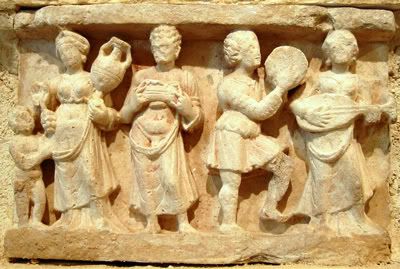
Scene: The House of Bassarodoros, Situated in Alexandria on the Indus. The wealthy Bassarodoros celebrating his profits from the silk trade and for his own amusement and that of his guests, had invited three guests who each followed one popular philosophies from the land beyond the Indus. They were Shvetashvatara – a Brahmin who sought the secrets of the divine, Dharmaraksita – A monk of the Buddhists, and Siha – a follower of the doctrine of Mahavira.
The symposium began to get underway as the sun was setting and after libations were offered, a hymn had been sung to Bassareus, and all the usual ceremonies had been carried out, Bassarodoros rose and addressed his guests.
Bassarodoros: Friends, I have called these three esteemed followers of philosophy here because I seek to know what the self consists of since I have heard much debate on the subject recently in the marketplace. As Siha has traveled the greatest distance to our humble house, I shall ask him first: What is the self?
Siha: O noble Bassarodoros, the Self is the Self. It is an independent finite entity and it is immortal, it is the 'jiva'. The jivas inhabits all things from the rocks and animals to men and the gods. It is combined with the ajiva material and subtle things such as karma and thus is kept imprisoned in the grievous cycle of birth and death and birth... It is only by realizing that one is a jiva and extinguishing all karma can one gain entrance into Siddha-loka, the abode of the liberated to experience bliss for eternity.
Bassarodoros: Interesting... Some of what you speak of sounds like the doctrine of the followers of Orpheus.
Siha: I am afraid that I am not familiar with those of whom you speak.
Bassarodoros: Oh, it is just a movement that is native to my homeland that also speaks of the cycle of death and rebirth and follows a vegetarian diet but attributes the soul to the god Dionysus and the material body to the Titans, who are a bit like your Asuras, as explained in their myths. They seek liberation through purification, asceticism, and knowing how to navigate through Hades, the land of the dead.
Siha: From what you speak they sound like they may have heard the teachings of one of the previous Tirthankaras before Mahavira and have over time strayed from the true path of liberation.
Bassarodoros: Perhaps, though I personally do not find your proposition likely.
Shvetashvatara: O noble Bassarodoros, may I speak?
Bassarodoros: Yes, you may.
Shvetashvatara: Noble Bassarodoros, the followers of Mahavira are deluded about the the nature of the Self. The Self is not an individual entity that is an illusion, the True Self is one with God. Siha, even your own teaching hints at this truth, but because of ignorance you cannot see the truth.
Siha: What do you mean?
Shvetashvatara: I have heard some of your followers speak of God, and when I have questioned them they say that by this they mean your jinas and other liberated jivas who are indistinguishable from one another and so are called as a whole 'God'. Can you not see that all of your jivas share a single essence? And that essence is identical to God, or as we call the supreme reality, Brahman?
Siha: O wise Shvetashvatara, I believe that it is you who is deluded by your over philosophizing. Just because things have an identical nature does not make them the same being, perhaps you would say that there is only one human because all humans are alike but clearly when I go out into the city I have to navigate through crowds of humans and not just walk by one.
Shvetashvatara: You still do not understand. The crowds, the city, each human, all are illusions and it is only through ignorance that one does not understand that at the basic level all are the same and that the True Self, the Atman, is one with Brahman. Brahman pervades all reality like salt pervades in the waters of the great sea. It is only through our own ignorance of our true nature as one with Brahman that we exist thinking we are apart from him and continue through various lives and bodies. It is not you who sees, hears, acts, and feels – that is Brahman who is the true seer, the true hearer, the true actor, and the true feeler.
At this point the aged Dharmaraksita began chuckling.
Bassarodoros: Wise Dharmaraksita, is there something you wish to say?
Dharmaraksita: Oh yes, noble Bassarodoros.
Bassarodoros: Then speak, I especially look forward to what you have to say as you are Yona (Greek) yourself and much has been said about you and your illustrious pupil Nagasena in the marketplace and in some Yona lands statues and devotions to your 'Buddha' have become more popular than those to the god Shiva.
Dharmaraksita: Oh noble Bassarodoros, I chuckle because both Shvetashvatara and Siha are deluded by ignorance. The Self which they talk of does not exist, it is merely a construct – it is what we call the aggregates when they are together in a shape which we recognize. Take for example a chariot, despite what the so called sages say, even the great sages of Hellas, it is just a simple collection of parts.
Bassarodoros: What do you mean?
Dharmaraksita: Look at a chariot and then take it apart. One is left with merely a collection of parts which includes the wheels, the axel, and other things. Surely you would not call this collection of parts a chariot, would you noble Bassarodoros?
Bassarodoros: No, I would not.
Dharmaraksita: Then if the chariot is a thing, then where did it go? Thus it didn't truly exist in the first place.
Siha: But wise Dharmaraksita, I have heard some of the followers of the Buddha say that the self does exist as a Person. They call themselves the Pudgalavadins.
Dharmaraksita: Oh them, they have fallen away from the path to liberation and have been misled by deluded teachers. Any argument coming from their camp does not represent the true teachings of the enlightened one. As I have shown through use of example there is no self as there is no chariot.
Siha: When you speak of the self here, you seem to be speaking of the phenomenal self of every day terms and not the jiva or the even the Atman of the Brahmins.
Dharmaraksita: Nonsense, even if one part of the self is identified with the Jiva or the Atman that piece itself can be broken down into various parts like a wheel of a chariot which can be broken down into spokes, rim, and other things. These pieces in turn can be broken down to an infinite level and one would find that there is only emptiness – which is everything.
Shvetashvatara: How can you see nothing there at the ultimate ground of being?! That is the true reality itself and it is the essence of Brahman which is all. It is the seer, the hearer, the thinker, and doer of all action.
Dharmaraksita: You are very wise Shvetashvatara, but you cannot see past the last delusion of all. The attribution of an 'essence' to the ultimate ground of being. It is empty of and beyond all concepts including the concept of essence. There is no seer, no hearer, no thinker, and no doer. There is only seeing, hearing, thinking, and doing. There is only emptiness itself and when one truly knows this one attains nirvana and no longer dies or is reborn.
Siha: AH! But then were does your Buddha go? And what is reborn?
Dharmaraksita: Shakyamuni exists still but also does not still exist – his mindstream has been extinguished and cannot lead to the creation of another being but because he has dissolved away and one cannot identify him anymore does not mean he does not "exist". The mindstream is a process, it is like a flame in that it exists through the skandhas as fire burns from wood, oil, or wax. The flame itself may be transferred from one body to the next as one may light a candle with a candle – there is no essence or soul passed on it is simply the continuation of a process. Nirvana is the extinguishing of this process – say you let a candle burn until it has run out of wax to burn, the flame then goes out. Can you show me where the flame went?
Siha: No, I cannot.
Dharmaraksita: Then that is your answer as to where Shakyamuni went. He is neither here nor there. He did not have an independent essence, no being does, there are only processes in the emptiness.
Siha: I can see what both you and the wise brahmin say, but I still feel that I am still on the most correct path. We are perhaps like the blind men who sought to describe an elephant. Our differences are perhaps do to our different perspectives on the ultimate and by the limitations of the human mind and speech we only possess parts of the picture. This is known in my tradition as the doctrine of Manysidedness.
After this the debate on the nature of the self subsided and most of the guests descended into reveilles and discussed other matters. Siha and Shvetashvatara left not long after the discussion had ended and Dharmaraksita was beginning to leave as well when Bassarodoros approached him.
Bassarodoros: Oh wise Dharmaraksita, I wish to congratulate you for you are a great sage, and your explanation of the self made the most sense. I can now see why more and more Yona everyday are following the path of the Buddha. That the mindstream is a process – one that does not have a stable essence makes excellent sense to me as I have many times wondered how the 'soul' could be eternal if it was always changing due to changes in one's thinking or conditions. That emptiness is the ground of all beings makes more sense than saying that there is an essence to it since that is a concept – I can understand the Brahmin's point of view but seeing the ground of being as something more akin to the empty churning Khaos which Hesiod described makes much more sense. I can see now how the gods and other beings then arose as processes out of the Khaos through your wise teachings. I now wish to learn more of the Buddhist path.
Dharmaraksita then smiled and instructed Bassarodoros throughout the night and on into the morning.
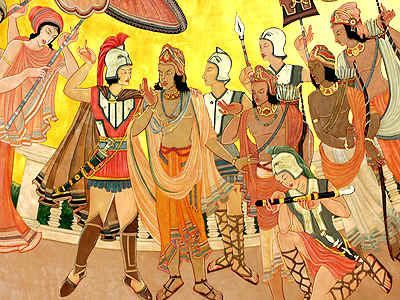
Bibliography
Conze, Edward. Ed. Buddhist Scriptures. London: Penguin Books. 1997.
Gitana. “Reincarnation: An Orphic Perspective”. The Hellenion Proto-Demos tes Hagnes Persephones. http://persephones.250free.com/orphic-reincarnation.html. (accessed October 16, 2007).
Gitana. “A Retelling of an Orphic Cosmogony”. The Hellenion Proto-Demos tes Hagnes Persephones. http://persephones.250free.com/orphic-cosmogony.html. (accessed October 16, 2007).
Embree, Ainslie T. Ed. The Hindu Tradition: Readings in Oriental Thought. New York: Vintage Books. 1972.
Embree, Ainslie T. Ed. Sources of Indian Tradition. Vol I. 2nd ed. New York: Columbia University Press. 1988.
Eknath, Easwaran. Trans. The Dhammapada. London: Nilgiri Press. 1985.
Flood, Gavin. An Introduction to Hinduism. UK: Cambridge University Press. 1996.
Hinnells, John R. Ed. The New Penguin Handbook of Living Religions. London: Penguin Books. 1997.
Holt, Frank M. Thundering Zeus: The Making of Hellenistic Bactria. Berkeley: University of California Press. 1999.
Marshall, John. The Buddhist Art of Gandhara. London: Cambridge University Press. 1960.
Narain, A. K. The Indo-Greeks. New York: Oxford University Press. 1957.
Rahula, Walpola. What the Buddha Taught. New York: Grove Press. 1974.
Rice, Tamara Talbot. Ancient Arts of Central Asia. New York: Frederick A. Praeger inc. 1965.
Williams, Paul and Anthony Tribe. Buddhist Thought: A Complete Introduction to the Indian Tradition. New York: Routledge. 2000.
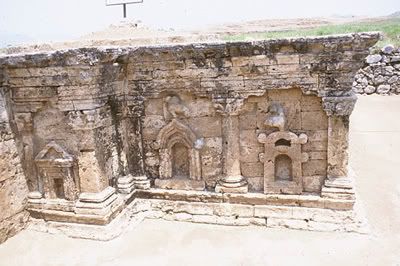
Friday, April 1, 2011
Once upon a time in the Magical Land of Equestria...
Once upon a time in the Magical Land of Equestria...
A Survey of the Mythology of My Little Ponies: Friendship is Magic
By Kitsula Tsulakala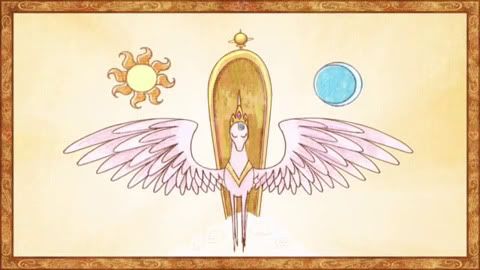
Of Aztec Mares and Indian Hares
The new animated series My Little Ponies: Friendship is Magic (MLP:FiM) starts out (as depicted in S01:E01-02 'The Mare in the Moon' & 'The Elements of Harmony') with a myth involving two divine Sisters: One who became known as Princess Celestia, who controls the Sun, and Princess Luna, who controls the Moon. At first there is balance but over time Luna becomes resentful and jealous of her solar sister and is transformed into the demonic Nightmare Moon. Nightmare Moon then refuses to let night pass and the sun to rise thus engulfing Equestria in eternal night. Reluctantly, Celestia uses the magic of the Elements of Harmony in battle against her sister defeating her and banishing her into the moon itself where she became the Mare in the Moon (which explains the features on the moon that looked like a horse). Celestia then became the sole ruler of the heavens controlling the entire sky returning harmony to the land of Equestria... At least until the Summer Solstice 1,000 years later when the stars are right to aid her escape...
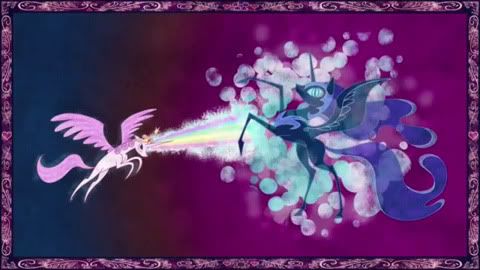
While this central myth in MLP:FiM is a compound of many myths involving quarrels between the Sun & the Moon it seems to bear the closest relation to the myth of the birth of the Aztec Sun God Huitzilopochtli:
The Myth of Huitzilopochtli as recorded in the Florentine Codex describes the birth of sun god Huitzilopochtli from the goddess Coatlicue. Fearing the child, the moon goddess Coyolxauhqui and the four hundred gods of the stars prepare for war to destroy Coatlicue and the young sun god. Preparing for battle Huitzilopochtli arms himself with a magical serpent staff made of candlewood. Setting it alight he enters battle against Coyolxauhqui and the Stellar Gods. Using the power of the flaming serpent staff Huitzilopochtli defeats Coyolxauhqui and the Stellar Gods. Huitzilopochtli then dismembers Coyolxauhqui and takes the emblems and powers of Coyolxauhqui and the Stellar Gods which Huitzilopochtli fixes into his own destiny to become the sole ruler and controller of the celestial sky.
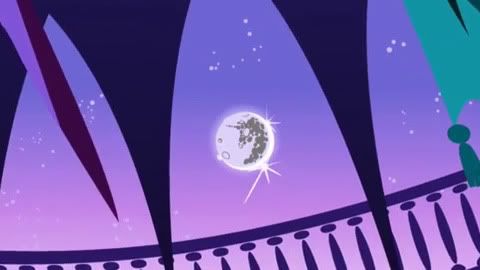
One can see the obvious parallels between Aztec and Pony Mythology such as the battle between the Sun and Moon due to jealousy, the use of a magic object to defeat the moon, and the Sun's ascent to sole ruler and controller of the celestial sphere. But what of the Mare in the Moon? The Mare in the Moon seems deprived from and to be a pun of the Indian Myth of The Hare in the Moon:
In this story Indra, the king of the gods, descends to the earth disguised as a staving beggar. The beggar who had been turned away by others finally asks for hospitality from a hare. The hare having nothing decides to offer himself to the staving beggar. The hare jumps into a pot intending to cook himself but the fire under the pot freezes as the fire god Agni will not allow it to burn the hare. Indra is so impressed with the hare's extreme hospitality that he reveals himself as Indra, king of the gods, and honors his host by painting the figure of the hare onto the moon as a testament for all time of the hare's hospitality.
But what of the stars which must be right to aid the escape of Nightmare Moon? This element seems to be taken from classic horror writer H.P. Lovecraft's Cthulhu Mythos. In Lovecraft's stories the Great Old One Cthulhu waits in dreamless sleep imprisoned in his sunken city of R'lyeh. When the stars are right however Cthulhu has an opportunity to escape so he can rain destruction and insanity upon the earth and take it over along with the rest of the the Great Old Ones.
Getting back to Pony Mythology: on the day of the Summer Solstice Celebration – the longest day of the year – Nightmare Moon escapes and kidnaps Princess Celestia again bringing darkness to Equestria.

This bit of the mythology seems to stem from a couple of sources: First the Modern Wiccan Myth of the Holly and Oak Kings who battle each solstice for domination. During the Summer Solstice the Oak King, who represents the light half of the year where the heat and the light of the sun reigns supreme, is vanquished by the Holly King, who represents the dark half of the year where the cold and darkness of night reigns supreme.
Another parallel to Pony Mythology comes from the Scottish myth of Brìghde and Cailleach Bheur. The fire goddess Brìghde rules the warm half of the year from Bealltainn (May 1) to Samhainn (November 1) however on Samhainn the winter queen Cailleach Bheur kidnaps and imprisons Brìghde during the cold half of the year much like Nightmare Moon's imprisonment of Princess Celestia.
The Classical Elements of Harmony
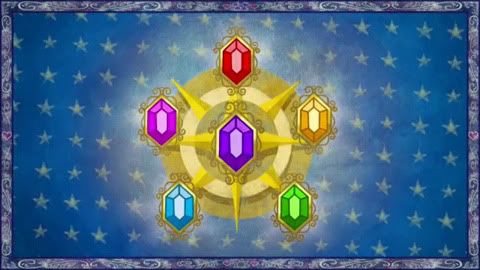
Continuing the Pony narrative: Twilight Sparkle, the unicorn and student of magic under Princess Celestia, must use all her knowledge of myth and magic to harness to the power of the Elements of Harmony to defeat Nightmare Moon and free Princess Celestia to restore harmony to Equestria. The five elements of Harmony are Honesty, Kindness, Laughter, Generosity, and Loyalty. There is also a sixth element which appears when all five are present – Magic or Friendship. These elements are matched up to the main characters of the series who discover their elemental powers and harness them to defeat Nightmare Moon and free Princess Celestia. The main ponies are matched up with the following elements:
Applejack – Honesty
Fluttershy – Kindness
Pinky Pie – Laughter
Rarity – Generosity
Rainbow Dash – Loyalty
Twilight Sparkle – Magic or Friendship
Following this Nightmare Moon transforms back into Princess Luna and returns with Princess Celestia to the mountaintop city of Canterlot where they return to rule Equestria although Princess Celestia maintains her role has the supreme ruler of the land and sky.
The Elements of Harmony bear a resemblance to Classical Elements of Greece and India. The Classical Four Elements are Water, Fire, Earth, and Air. Along with these elements there is a fifth 'element': the quintessence which is also variously called aether, akasha, spirit, heaven, space, or void. This Element is the source from which the other four elements spring. The quintessence also permeates and sustains the other elements. Thus when all four elements are combined one can return again to the primal element which is identified with the quintessence.
The Classical Elements can even somewhat be matched up to the Elements of Harmony with one repetition:
Earth – Applejack – Honesty
Water – Fluttershy – Kindness
Air – Pinky Pie – Laughter
Water – Rarity – Generosity
Fire – Rainbow Dash – Loyalty
Quintessence – Twilight Sparkle – Magic or Friendship

Earth matches up with Applejack and Honesty as this Earth Pony grounds the rest of group through honesty, works as a farmer, and as a flaw she has a stubborn streak (which she displays in episode S01:E04 'Applebuck Season') which are all earthy traits.
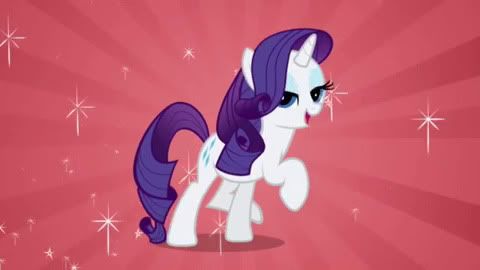

Water matches up with Fluttershy and Rarity who are the most emotional of the group which marks their watery nature with their emotional compassion. Both Kindness and Generosity are watery compassionate traits. The main difference between the two is that Fluttershy is introverted while Rarity is extroverted.
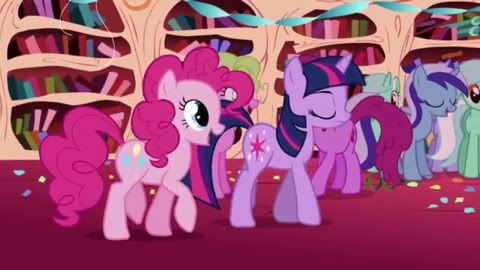
Pinky Pie and Laughter match up with Air as Pinky Pie is an air head who has problems focusing. While Pinky Pie is an air head she also has glimmers in which she shows her knowledge such being able to quickly use logic to locate books (as seen in episode S01:E02 'Elements of Harmony') or as having the foresight to see the danger of the Parasprites and figuring out how to stop them (as seen in S01:E10 'Swarm of the Century'). She also lightens up the group with her laughter – an airy operation.

Rainbow Dash matches up with Fire quite easily as she is a very quick, temperamental, passionate, and boastful pony which all mark her very fiery nature. Loyalty is less of a match for fire itself, but it is displayed by her courage (a fiery trait) in that she consistently puts her friends' safety before herself when they are in danger.
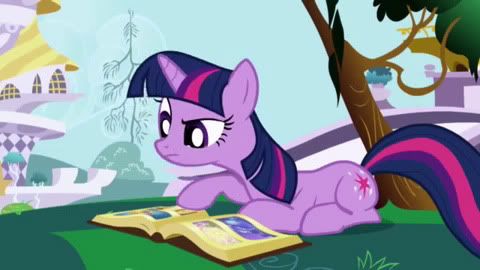
Twilight Sparkle is the Quintessence of the group as she is the leader and glue of the main group of ponies, it is she who helps to sustain and enrich the entire group through her friendship. It is only though their friendship that Twilight Sparkle herself is complete and can work her magic to the the full extent of her power. Friendship is equated to the Quintessence as it permeates and sustains the group, while Magic equates to its powerful and mystical qualities.
As a further observation on the central myth like Zeus ruling from atop Mt. Olympus and Indra ruling from atop Mt. Meru, Princess Celestia is seen ruling the land and the skies from the mountaintop celestial city of Canterlot.
The Twilight Mithra
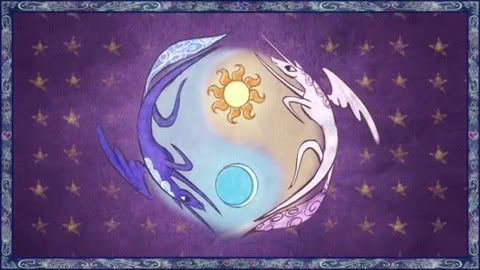
Looking again Twilight Sparkle's form and name: Twilight's name and coloration places her between the light and the dark. Additionally she functions as the emissary of Princess Celestia to promote harmony and friendship.
Interestingly this links Twilight with a Persian form of Mithra. In the Zurvanist thought of the Sassanian era, Mithra functioned as a emissary of the god of light, Ahura Mazda, and was responsible for mediating between Ahura Mazda and the god of darkness, Angra Mainyu, in order to create harmony.
In another linkage the modern form of Mithra in Farsi, Mehr, has three meanings: Love, Sun, and Friend. All of which relate to Twilight Sparkle.
Cutie Dharman
Another important part of Pony Mythology is the 'Cutie Mark' (as highlighted in Episodes S01:E12 'Call of the Cutie' & Episodes S01:E18 'The Show Stoppers'): As ponies grow up they must discover their unique talent and place in pony society. When they discover this an emblem related to their talent/role appears on their flank as a 'Cutie Mark'. This is similar to the Indian concept of Dharman/Dharma which is one's role in the cosmic order or Rta. This is illustrated in the later Indian story of the Ascetic and the Scorpion:
One day an old ascetic saw a scorpion drowning in the water of a river. The ascetic retrieved the scorpion which promptly stung him. The ascetic smiled and released the scorpion onto the shore. When asked why he did not get angry at the scorpion for harming him, the ascetic replied that just as it was his dharma to come to the aid of all creatures, it was the scorpion's dharma to string – all functioning according to the cosmic order.
This can also be related to Aleister Crowley's religious philosophy of Thelema in his concept of the 'True Will'. The 'True Will' is one's purpose or function in life and the path of action that maintains harmony in the cosmos. This is the Will meant in Crowley's (in)famous phrase 'Do what thou wilt shall be the whole of the law' as when one is acting out one's true function in the cosmic order harmony prevails.
As an aside Twilight Sparkle's Cutie Mark resembles the Unicursal Hexagram symbol which frequently appears and is used in the Thelemic system.
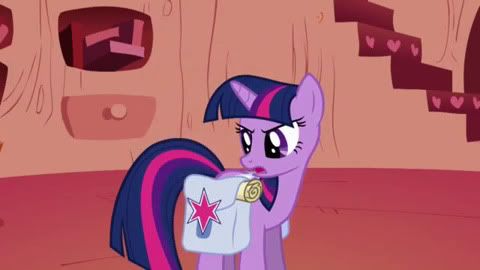
Bibliography
Amore, Roy C. and Larry D. Shinn. The Hare in the Moon in Lustful Maidens & Ascetic Kings: Buddhist and Hindu Stories of Life. New York: Oxford University Press. 1981.
Aztec-Indians.com. Aztec Gods: The Rituals, the Sacrifices, and the Myths. Aztec-Indians.com. http://www.aztec-indians.com/aztec-gods.html (accessed March 31, 2011).
Demariaux, Jean-Christophe. How to Understand Hinduism. London: SCM Press Ltd. 1995.
Emick, Jennifer. Brighid. netplaces. http://www.netplaces.com/celtic-wisdom/the-divine-female/brighid.htm (accessed March 31, 2011).
Flood, Gavin. An Introduction to Hinduism. New York: Cambridge University Press. 1996.
Gwydion. Brigid - The Goddess of Imbolc and Celtic Europe. Realmagick.com. http://www.realmagick.com/6807/brigid-the-goddess-of-imbolc-and-celtic-europe/ (accessed March 31, 2011).
Kaczynski, Richard. The Weiser Concise Guide to Aleister Crowley. Edited by James Wasserman. San Francisco: Weiser Books. 2009.
Knappert, Jan. Hare in Indian Mythology: An Encyclopedia of Myth and Legend. 115. London: Diamond Books. 1995.
Living on Earth. Mara Freeman. Living on Earth. http://www.loe.org/shows/segments.html?programID=07-P13-00052&segmentID=1 (accessed March 31, 2011).
Markman, Roberta H. and Peter T. Markman. The Flayed God: The Mesoamerican Mythical Tradition. New York: HarperCollins Publishers. 1992.
My Little Pony: Friendship is Magic. first broadcast 10 October 2010 by The Hub. Developed by Lauren Faust.
Nabarz, Payam. The Mysteries of Mithras: The Pagan Belief That Shaped the Christian World. Rochester: Inner Traditions. 2005.
Ngawang, The Scorpion and the Old Man. The Dharma Corner. http://www.dharmacorner.net/2009/06/scorpion-and-old-man.html (accessed March 31, 2011).
Ratrija, Adhitin and N. Agnayi. Why Vedism. Ár nDraíocht Féin: A Druid Fellowship, Inc. http://www.adf.org/rituals/vedic/why-vedism.html (accessed March 31, 2011).
Sanatan Society. The Saint and the Scorpion. Sanatan Society. http://www.sanatansociety.org/indian_epics_and_stories/the_saint_and_the_scorpion.htm (accessed March 31, 2011).
Wigington, Patti. The Legend of the Holly King and the Oak King. About.com. http://paganwiccan.about.com/od/yulethelongestnight/p/Holly_KIng_Yule.htm (accessed March 31, 2011).
Wikipedia. Cailleach. Wikipedia. http://en.wikipedia.org/wiki/Cailleach (accessed March 31, 2011).
Wikipedia. Cthulhu. Wikipedia. http://en.wikipedia.org/wiki/Cthulhu (accessed March 31, 2011).
Wikipedia. Dharma. Wikipedia. http://en.wikipedia.org/wiki/Dharma (accessed March 31, 2011).
Wikipedia. Zurvanism. Wikipedia. http://en.wikipedia.org/wiki/Zurvanism (accessed March 31, 2011).